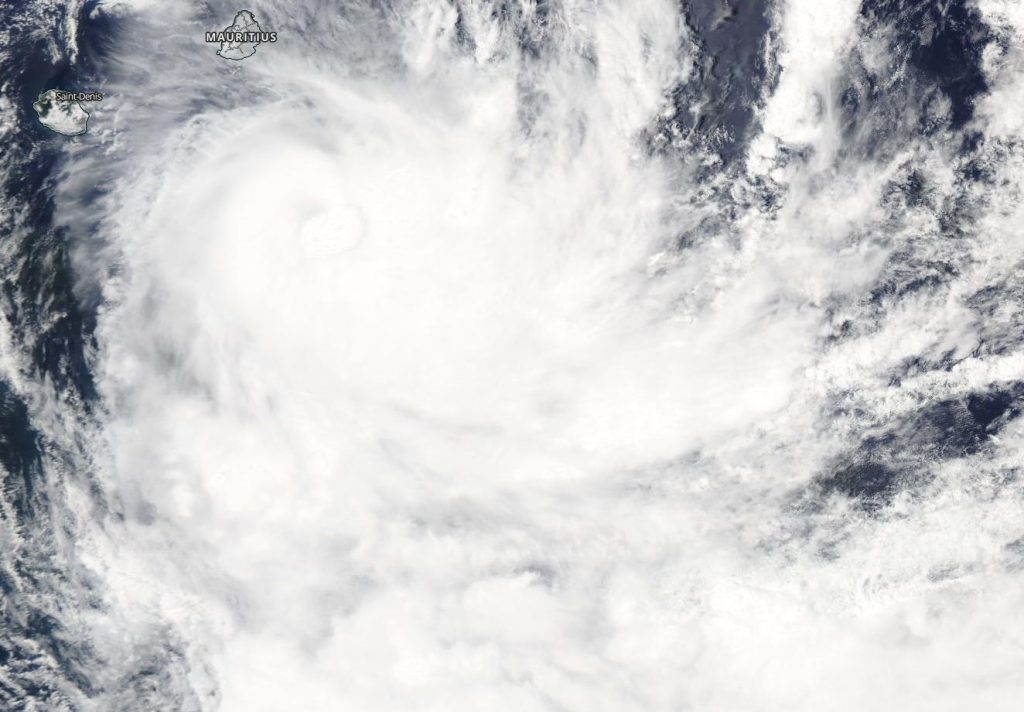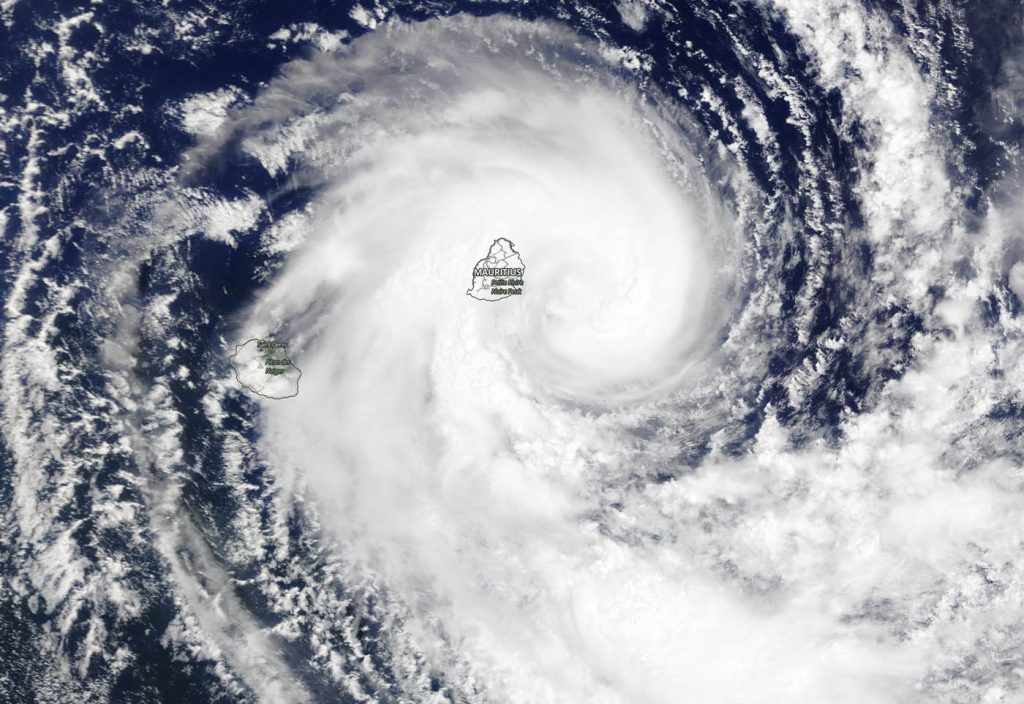Dec. 31, 2019 – NASA Finds Tropical Storm Calvinia Moving Away from Mauritius
Visible imagery from NASA’s Aqua satellite on Dec. 31 revealed that Tropical Cyclone Calvinia had moved south of the island of Mauritius in the Southern Indian Ocean.

A tropical cyclone warning class III was still in effect in Mauritius.
On Dec. 31 at 0300 UTC (Dec. 30 at 10 p.m. EST) the Joint Typhoon Warning Center noted that Tropical Cyclone Calvinia was located near latitude 21.1 degrees south and longitude 58.0 degrees east, about 72 nautical miles south-southeast of Port Louis, Mauritius. Maximum sustained winds had increased to 60 knots (69 mph/112 kph).
Later on Dec. 31 the Moderate Resolution Imaging Spectroradiometer or MODIS instrument that flies aboard NASA’s Aqua satellite provided a visible image of Calvinia that showed the storm had a well-rounded shape. The MODIS image revealed bands of thunderstorms spiraling into the tight low-level center of circulation.
Calvinia is forecast to turn to the southeast and strengthen to 65 knots. After Jan. 1, the storm will start to become extra-tropical.
NASA’s Aqua satellite is one in a fleet of NASA satellites that provide data for hurricane research.
Tropical cyclones and hurricanes are the most powerful weather events on Earth. NASA’s expertise in space and scientific exploration contributes to essential services provided to the American people by other federal agencies, such as hurricane weather forecasting.

